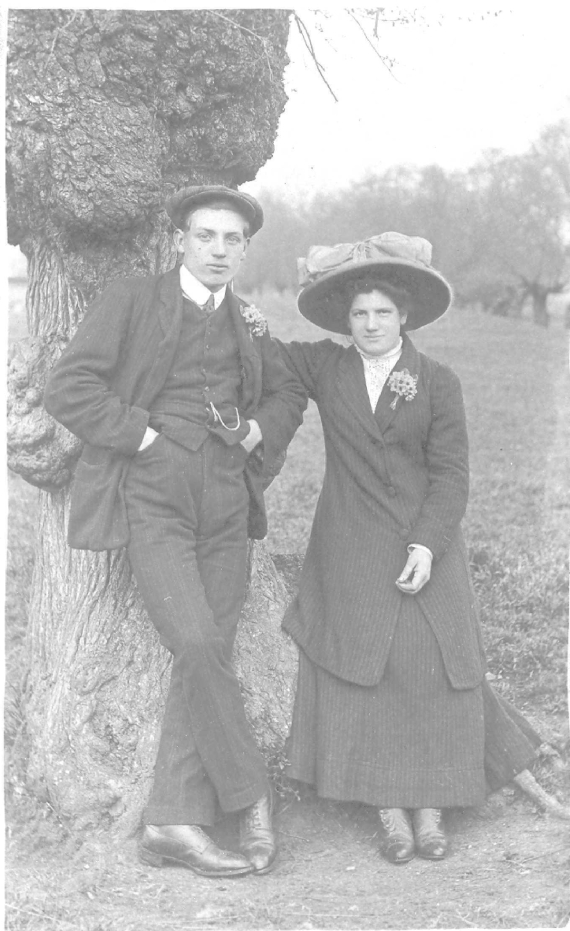Have you heard of the Gaspipe Cavalry?
This nickname was given to The Huntingdonshire Cyclist Battalions, (The Hunt’s Cyclists) a military unit raised within the county of Huntingdonshire.
As part of the Huntingdonshire History Festival Mr Martyn Smith, webmaster of http://huntscycles.co.uk/ gave a talk at the George Hotel in Huntingdon on the 26 of July.
His talk about the Hunts Cyclist Battalion was interesting and informative. Several of the audience had ancestors or other relatives who had served in our local unit. Many men then moved on to regiments of the line to fight in France or overseas. The Hunts Cyclist battalion was only allowed to deploy in the British Isles under the army regulations of the time.

A photograph of A Company Hunts Cyclists at Filey in 1914
Most of us didn’t know but guessed at the high casualty rate; of those who joined, 25% were killed and 50% wounded in action. Many more carried hidden wounds until the day they died. Reliving unrelenting memories of horrors they had witnessed or grief for the loss of close, even boyhood friends. Post Traumatic Stress wasn’t identified as a problem then and no treatment was available.
This local battalion, a cavalry unit was started in 1908, the Earl of Sandwich its honorary colonel. Because Huntingdonshire was a small rural county, there seemed little likelihood that the 1000 men needed to form an infantry regiment would be available. A cavalry battalion only needed 500 men. However instead of horses, their steeds were to be bicycles, the soldiers were described as wheelmen. As some of the bicycles were allegedly made from surplus gas pipes, they became known as the Gaspipe Cavalry.
The Hunts Cyclists spent their active service in Yorkshire and North Lincolnshire protecting the coast from a possible German invasion. As Martyn pointed out their single shot rifles were no deterrent to the German Battleships which shelled some East coast towns. Their failure to deter the German navy led to ill feeling from the affected town’s residents who were disappointed in their failure.
The talk showed in great detail how the local Hunts community got behind their own men whether it was knitting warm clothing for them or converting vehicles to carry machine guns.
He detailed the development of the Gaspipe Cavalry’s mounts (originally the cyclists were expected to supply their own steeds). How rifle mounts were developed, the need for brakes, (very important in the hilly areas where they were stationed not so in the fens). There were many casualties caused by the cycles themselves until their design was improved
Another interesting feature was the billeting arrangements, bell tents for the unfortunate men, a hotel for the officers. He mentioned Charles Laughton, not from Huntingdon but a family member of the hotel owners in Scarborough where the HC. officers stayed. He was evidently recruited there. Charles Laughton became a famous actor in the twenties and thirties. Starring on both the stage and in films He went onto become a renowned film director and producer, dying in 1962 at Hollywood.

Mr and Mrs Richard Cumberland. My grandad and grandma.
My grandfather Richard Cumberland served in the army during the First World War. Joining the Hunt’s Cyclist Battalion in August 1914 before seeing active service as a member of Royal Warwickshire Regiment. He was discharged wounded in February 1918.
His first posting was as a member of A Company to Filey, I am not sure whether during the time he was there my grandmother joined him or not. I have a recollection of a story that Granddad helped out at the fish docks unloading the catches, whether this was at Filey or somewhere else in that area. This may have been as part of his duties or a bit of spare time private enterprise. When you are young you seldom ask the questions you should have done. Thinking that people will live forever you put off finding out information that will become so precious in later years.

War badge record showing Grandad’s discharge record
Martyn’s love of his subject, the tremendous respect and desire to make sure these men who sacrificed so much are not forgotten is something that will stay with all of us who were privileged to hear him speak, for a long time. He has made it his mission to track down every member of the Hunts Cyclists and commemorate each one, holding memorial services as he finds another grave or resting place. Honouring the men we owe our existence to
Thank you, Martyn, for a most interesting talk.




